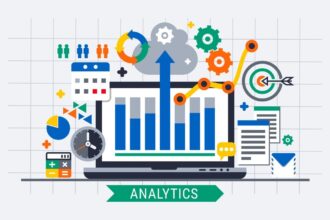The role of business intelligence (BI) is slowly shifting within organizations. People speak about the transition from traditional uses towards operational or pervasive BI and the fact that as technology advances, the role of BI in general is becoming increasingly valuable within the daily decision making habits of many businesses. In addition, the ability to: 1) integrate social metrics into business intelligence applications, and 2) use social networking concepts within BI frameworks increase the push towards a more interactive and timely approach to BI adoption. Both of these items are complementary to making BI more user friendly and usable – ideas that have eluded many organizations for a long time.
The first includes the use of text analytics and importing external data sources to gain a broader picture of what is happening within an industry, with competitors, or insights into product perceptions. The second relates to the idea of integrating social media functionality into business intelligence applications. The premise behind which, is to make BI accessible to the masses…
The role of business intelligence (BI) is slowly shifting within organizations. People speak about the transition from traditional uses towards operational or pervasive BI and the fact that as technology advances, the role of BI in general is becoming increasingly valuable within the daily decision making habits of many businesses. In addition, the ability to: 1) integrate social metrics into business intelligence applications, and 2) use social networking concepts within BI frameworks increase the push towards a more interactive and timely approach to BI adoption. Both of these items are complementary to making BI more user friendly and usable – ideas that have eluded many organizations for a long time.
The first includes the use of text analytics and importing external data sources to gain a broader picture of what is happening within an industry, with competitors, or insights into product perceptions. The second relates to the idea of integrating social media functionality into business intelligence applications. The premise behind which, is to make BI accessible to the masses, easily consumable, and increase its overall value proposition.
Lyzasoft is one solution provider that has taken the second concept surrounding social media and ease of use to design and develop their BI platform to create a collaborative and self-service approach to BI using a social media framework. In a recent interview with Scott Davis, co-founder of Lyzasoft, he discussed some trends that have led us to the ability to the necessity to combine social media with BI to create the business value and interactivity essential for businesses. The two main shifts are “from a technology perspective that put us in a situation where some things that we used to have to regard as scarce are now regarded as essentially free (i.e. storage space, bandwidth, etc.); and a demographic shift, where we’re seeing the first cohort of people entering the workforce who have been online for their entire lives, have been involved with digital tools and digital communities and that shapes what they are capable of and what they expect. These two trends coupled with the radical increase in the digitization of records and data as a result pose substantial challenges to traditional BI.” Because of these shifts in technology and users, solution providers are starting to integrate this functionality into their products. Most, however, still are far from developing a social media centric approach to BI in the same way as Lyzasoft.
Overall, Lyzasoft hopes to bring three things to end users. The first is to enable customers “on their own, to explore, gather, put together, and harvest information. Basically, bring together information from a lot of different sources and stitch together a picture of the interconnectedness of this organism which is the enterprise.” The second is analysis and involves pulling apart, deconstructing, comparing, and the like to gain the insights required to make valuable business decisions. The third is where the social media aspect of Lyzasoft really takes hold. As Scott describes it, “how do we share, communicate, distribute, coordinate, and collaborate on the analysis?” That means developing an interactive framework to let customers interact with one another by posting analyses in blogs, having discussions, sharing information, and the like.
Overall, there are always positive and negative aspects to any solution available in the market. One of the positives about Lyzasoft is that they have developed a product that provides a true set of differentiators from competitive solutions.








